Nurture your skin with the art of homemade soap making, a craft that combines nature’s bounty with your personal touch. Learn how to make soap at home with our guide of 25 homemade soap making tutorials that simplify the process. Learn to select the finest natural ingredients and tailor soaps to your skin’s unique needs, all while enjoying the cost-saving benefits and the gratification of making something by hand.
Ready to transform simple ingredients into your very own skin-care marvels? Each homemade soap tutorial is designed to guide you through the process with ease. As you explore our homemade soap recipes, you’ll find a variety of options, from vegan delights to rich, oatmeal-infused bars. Stay tuned as the next section unfolds the secrets to crafting a nourishing homemade soap right in your home.
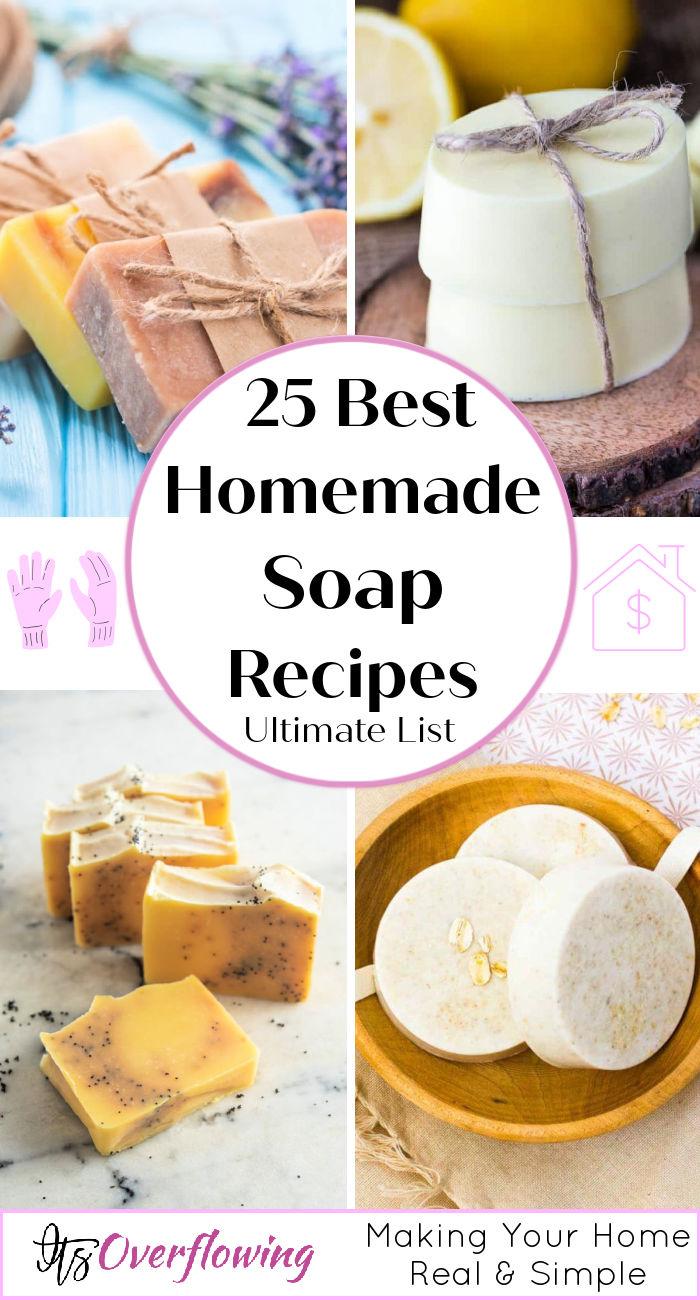
Why Make Soap at Home?
Making soap at home has become increasingly popular, and for good reasons. It’s not just a crafty endeavor but also a practical way to take control over what goes into your skincare products. Here’s why you should consider homemade soap:
- Personalization: Tailor soap recipes to your skin’s needs and preferences, choosing specific oils, scents, and additives that suit you best.
- Natural Ingredients: Avoid harsh chemicals found in some commercial soaps by using natural ingredients that are gentle on the skin and environmentally friendly.
- Cost-Effective: Making soap in bulk can save you money in long run. After the initial purchase of, the cost per bar is often lower than store-bought options.
- Therapeutic Activity: The soap-making process can be a relaxing and satisfying hobby. It’s a creative outlet that can also serve as a mindful break from daily stress.
- Eco-Friendly: Handmade soap often uses biodegradable materials and minimal packaging, reducing plastic waste and environmental impact.
- Educational: Learn about the science behind soap making, including saponification and the properties of different oils and butters.
- Gift-Giving: Handcrafted soaps make thoughtful and personalized gifts for friends and family.
- Fun for All Ages: It’s an activity that can be enjoyed alone, with friends, or as a fun family project.
By making your own soap, you not only gain a product that’s customized and kind to your skin, but you also embrace a fulfilling and eco-conscious hobby that benefits both you and the planet.
How to Make Soap at Home: A Beginner’s Guide
Making soap at home can be a delightful and gratifying experience. It’s a way to ensure your skincare products are natural, cost-effective, and tailored to your personal needs. Here’s a simple guide to help you embark on your soap-making journey.
Understanding the Basics
Before you start, it’s essential to understand the process and the precautions you need to take:
- Saponification: This is the chemical reaction between fats/oils and lye that creates soap.
- Lye Safety: Always handle lye with care. Wear gloves, goggles, and work in a well-ventilated area.
- Equipment: Use heat-resistant containers and utensils that are designated for soap making only.
Step-by-Step Soap Making
Step 1: Gather Your Materials
- Oils ( as olive oil, coconut oil, or almond oil)
- Lye (sodium hydroxide)
- Distilled water
- Essential oils or fragrances (optional)
- Additives like herbs, oats, or honey (optional)
- Soap molds
- Immersion blender
- Safety gear (gloves and goggles)
- Digital scale
Step 2: Prepare the Lye Solution
- Carefully measure the lye and water using a digital scale.
- Slowly add the lye to the (never the other way around) to avoid a volcanic reaction.
- Allow the lye solution to cool in a safe area.
Step 3: Mix Oils and Lye
- Measure and gently heat your oils in a large pot.
- Once both the oils and the lye solution have reached similar temperatures, slowly pour the lye solution into the oils.
- Use an immersion blender to mix until the batter reaches ‘trace’ (when the soap leaves a visible trail on the surface).
Step 4: Add Extras
- At trace, add any essential oils, fragrances, or additives you’d like in your soap.
- Mix these in gently to ensure even distribution.
Step 5: Pour into Molds
- Pour the soap mixture into your molds.
- Tap the molds gently to remove any air bubbles.
- Cover the soap with a towel to insulate it as it saponifies.
Step 6: Curing
- Let the soap set in the mold for 24-48 hours until it hardens.
- Once hard, remove it from the mold and cut it into bars if needed.
- Cure the soap bars for 4-6 weeks in a cool, dry place to allow water to evaporate and the soap to harden fully.
Step 7: Testing and Using
- After curing, test the soap on your hands to ensure it’s not irritating.
- If it’s gentle, it’s ready to use!
Tips for Success
- Stay Safe: Always make soap in a space where you won’t be interrupted, and keep children and pets away.
- Be Precise: Soap making is a science, so measuring ingredients accurately is crucial.
- Experiment: Once you’re comfortable with the basics, feel free to experiment with different oils, scents, and additives.
Soap making at home can be a fun and creative way to care for your skin and express your creativity. With this guide, you can start making soaps that are as unique as you are. Enjoy the process, and be proud of the natural, handcrafted soaps you’ll make!
Frequently Asked Questions About Making Soap at Home
Discover the answers to common inquiries about crafting homemade soap. Get expert insights on making soap at home in this informative FAQ guide.
What are the benefits of making soap at home?
Homemade soap advantages include:
- Personalization: Tailor ingredients to suit skin type and preferences.
- Natural Ingredients: Control what goes into your soap, avoiding harsh chemicals.
- Cost-Effectiveness: Save money by making soap in bulk.
- Therapeutic Activity: Soap-making can be a relaxing hobby.
- Eco-Friendly: Often involves biodegradable materials and less packaging.
- Educational: Learn about the science of soap-making.
- Gift-Giving: Make thoughtful, personalized gifts.
- Fun for All Ages: An enjoyable activity for individuals or families.
Is it safe to make soap at home?
Yes, it is safe as long as you follow proper safety protocols:
- Handle lye with care: Wear gloves, goggles, and work in a well-ventilated area.
- Use designated equipment: Keep soap-making tools separate from kitchenware.
- Be cautious and attentive: Ensure you won’t be interrupted, especially by children or pets.
What basic equipment do I need to start making soap at home?
Essential soap-making equipment includes:
- Digital scale for precise measurements
- Heat-resistant containers for mixing
- Immersion blender for combining ingredients
- Soap molds for shaping
- Safety gear such as gloves and goggles
Can I make soap without using lye?
- Melt and Pour Method: This is a popular way to make soap without handling lye directly. You can purchase pre-made soap bases that only require melting, customizing, and pouring into molds.
How long does it take for homemade soap to cure?
- Curing Time: Typically, homemade soap needs to cure for about 4-6 weeks. This allows water to evaporate and the soap to harden fully, ensuring longevity and a better user experience.
Can I use any type of oil for soap making?
- Oil Selection: Different oils contribute various properties to the soap. For example, coconut oil is great for lather, while olive oil is known for its moisturizing qualities. Research or follow recipes to choose the best oils for your soap.
How do I know if my homemade soap is safe to use?
- Testing: After curing, test the soap on a small area of your hands. If there is no irritation, the soap is generally safe to use. Always ensure the soap has reached the correct pH level to confirm all lye has saponified.
How can I add color or fragrance to my soap?
- Color and Fragrance: You can add colorants and fragrances at the ‘trace’ stage of soap making. Use natural options like clays and essential oils for a more natural soap.
What do I do if my soap doesn’t turn out as expected?
- Troubleshooting: If your soap isn’t perfect, try to understand what went wrong. Common issues include incorrect measurements or temperatures. Use it as a learning experience for your next batch!
By adhering to these guidelines and taking proper precautions, you can enjoy the creative and rewarding process of making soap at home. Whether you’re a beginner or an experienced soap maker, always strive for safe practices and patience as you explore the endless possibilities of homemade soap crafting.
Homemade Soap Making Tutorials
Learn to make homemade soap with these easy-to-follow tutorials. Make your own personalized soaps and indulge in the art of soap making. Perfect for beginners and experienced crafters alike.
1. Easy DIY Cold Process Soap for Beginners
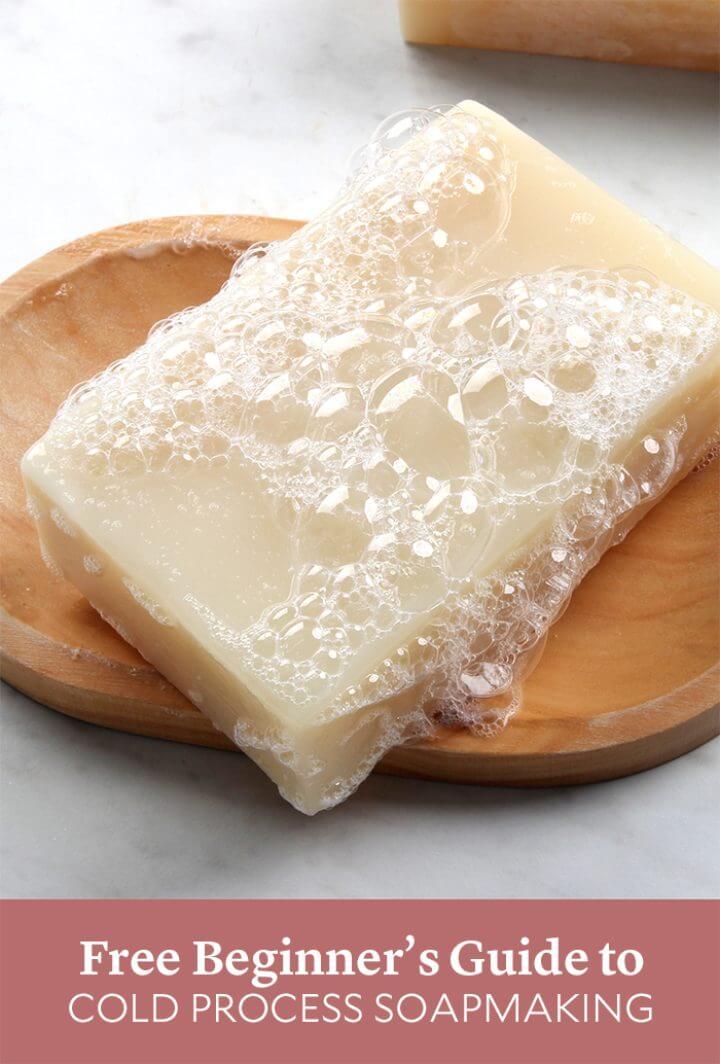
Dive into soapmaking with the Soap Queen‘s Free Beginner’s Guide to Soapmaking: Cold Process. Master the art of making custom soaps with this comprehensive guide, which includes essential terms, safety protocols, and a curated list of equipment needed to start your soap crafting journey. From selecting oils to designing your own bars, learn each step with easy-to-follow instructions.
Plus, discover beginner to advanced recipes to test your skills and enhance your soapmaking repertoire. Perfect your craft and enjoy the satisfaction of making beautiful, handmade soaps for yourself and others.
2. Homemade Soap Using Coconut Oil
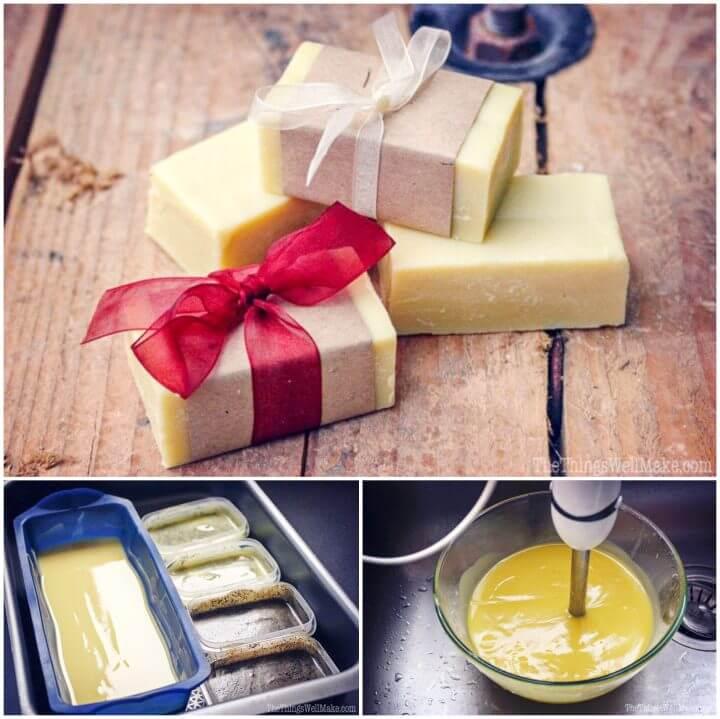
Dive into soap making with a quick and easy recipe that’s perfect for those starting out. Oh, The Things We’ll Make! guides you through crafting a basic soap with room for personalization. Add your touch with exfoliants, essential oils, and colors. You’ll learn the significance of each ingredient, such as olive oil for conditioning and coconut oil for lather, and the role of lye in saponification.
The step-by-step process is broken down, from mixing your lye solution to achieving “trace,” and finally, molding and curing your creation. Embrace the satisfaction of making soap from scratch, ensuring a gentle and effective product for your skin.
3. Making a Hand and Body Soap
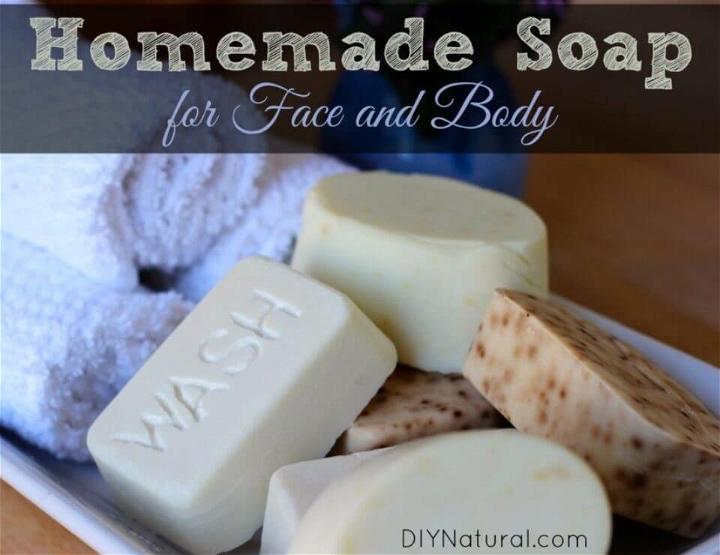
Discover how to craft your own soap with Debra Maslowski’s expert guidance on DIY Natural. Her simple, versatile, and tried-and-true method demystifies the soap-making process, allowing you to make nourishing hand and body soaps with ease. From selecting quality ingredients to mastering the art of saponification, Debra’s tutorial ensures a successful and enjoyable experience.
Dive into homemade soap making and enjoy the satisfaction of using bars tailored to your preferences. With clear, step-by-step instructions, this resource is perfect for those eager to explore natural soap crafting at home.
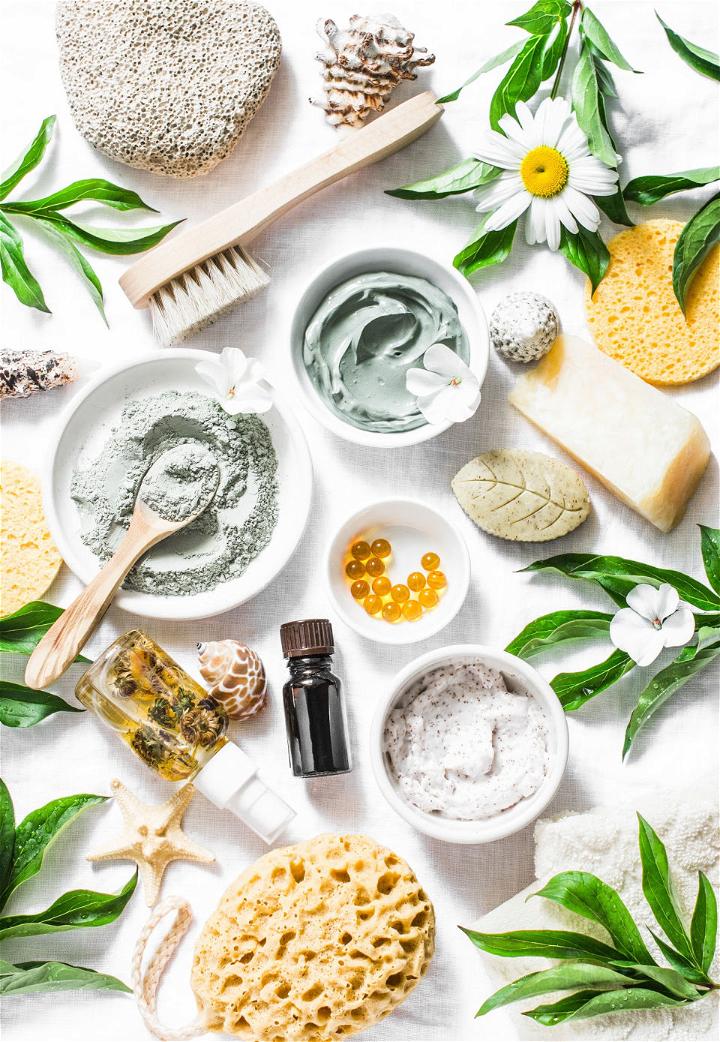
We all love a good face mask, but don’t always love the price tag that comes with it. Learn how to make a homemade face mask made with natural ingredients you have in your home for your skin type, that can help you to get rid of many skin problems with great smell at no cost.
4. How to Make Your Own Soap
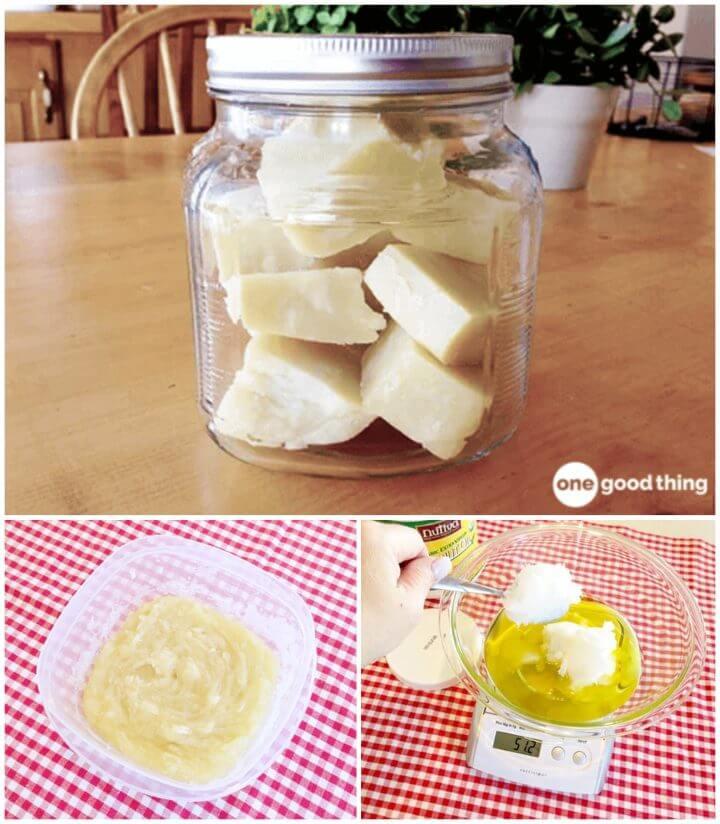
Ready to try your hand at making homemade soap using a crockpot? One Good Thing by Jillee guides you through a simple and enjoyable process that’s less intimidating than you might think. With just a few ingredients like olive oil, coconut oil, lye, and water—and common kitchen tools such as a scale and stick blender—you’ll be crafting your own bars of soap in no time.
Jillee’s step-by-step instructions make it easy to follow along, even if you’re new to soap making. Plus, you’ll learn the importance of precise measurements and the role of a digital scale in achieving the perfect soap consistency. Get ready to transform your kitchen into a creative soap-making studio and add a personal touch to your homemaking repertoire.
5. DIY Layered Soap With Essential Oils
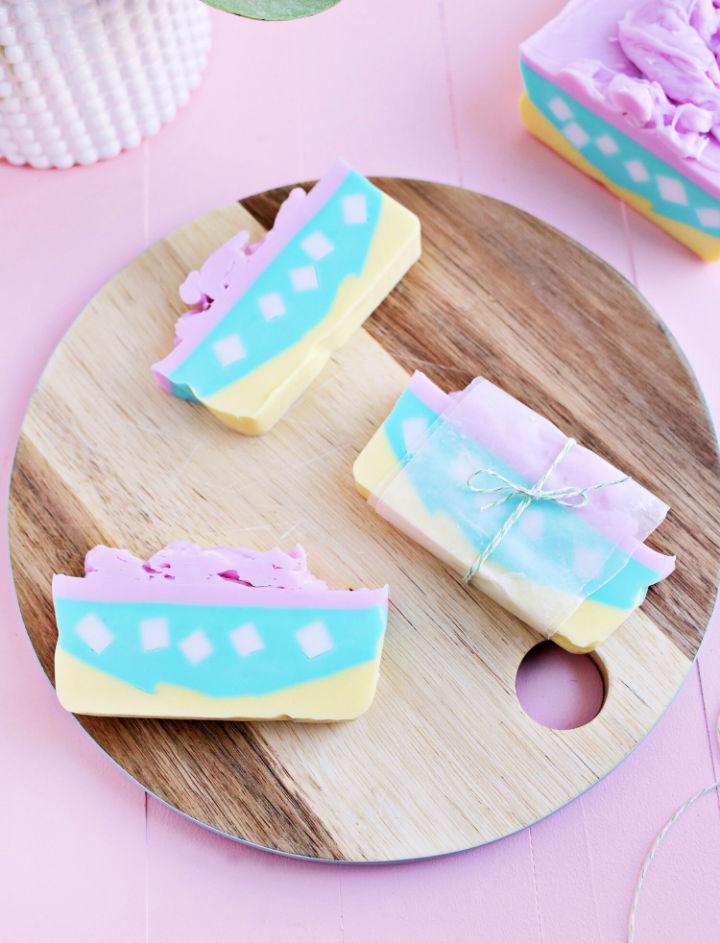
Delve into the creative process of making layered soap with A Beautiful Mess‘s DIY guide. Crafting your own soap can be a rewarding experience, and this tutorial helps you achieve those organic, wavy layers that add a unique touch to your handmade products. Learn how to prepare your materials, melt and pour soap, and add colors and textures for a beautiful finish.
The step-by-step instructions are clear, making the process manageable for anyone keen on personalizing their home essentials. With helpful tips on achieving the perfect layers and incorporating essential oils, you’ll be equipped to make soaps that are as fragrant as they are visually stunning. Get ready to enhance your crafting skills and fill your space with the charm of custom-made soaps.
6. Cinnamon Cocoa Melt and Pour Soap
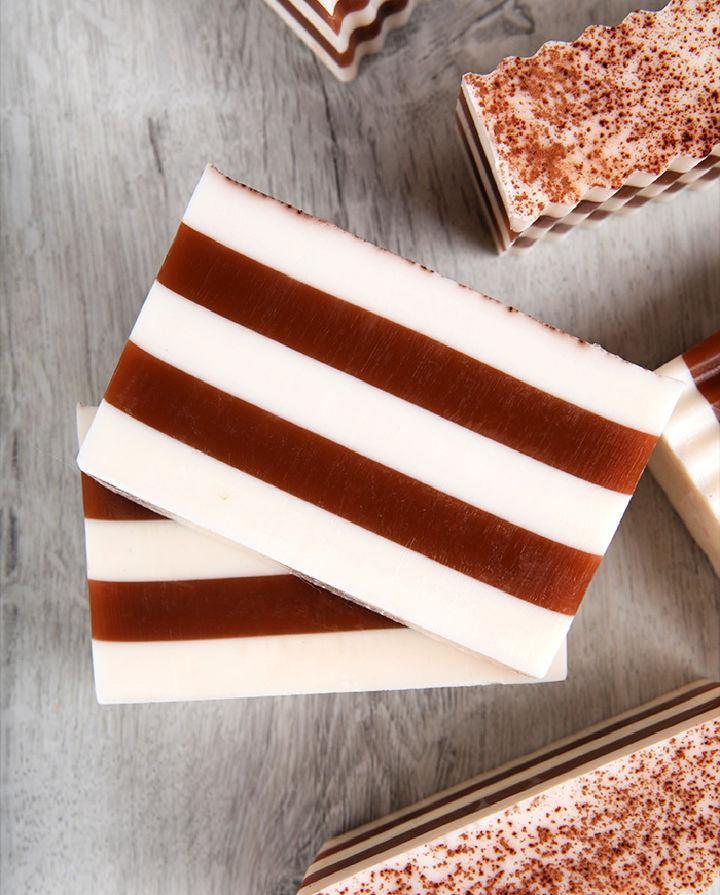
Making melt and pour soap can be a rewarding DIY project, and Soap Queen‘s guide to making Cinnamon Cocoa Melt & Pour Soap is the perfect place to start. This tutorial provides step-by-step instructions for crafting beautifully layered soap bars with a delectable cinnamon cocoa scent. Ideal for gifting or personal use, the process involves patience, careful temperature control, and the use of isopropyl alcohol to achieve clean, adherent layers.
With a list of required materials and clear directions, even those new to soap making can produce professional-looking results. Remember to wrap your finished bars in plastic to prevent glycerin dew and enjoy your handmade creation.
7. DIY Soap Step by Step Instructions
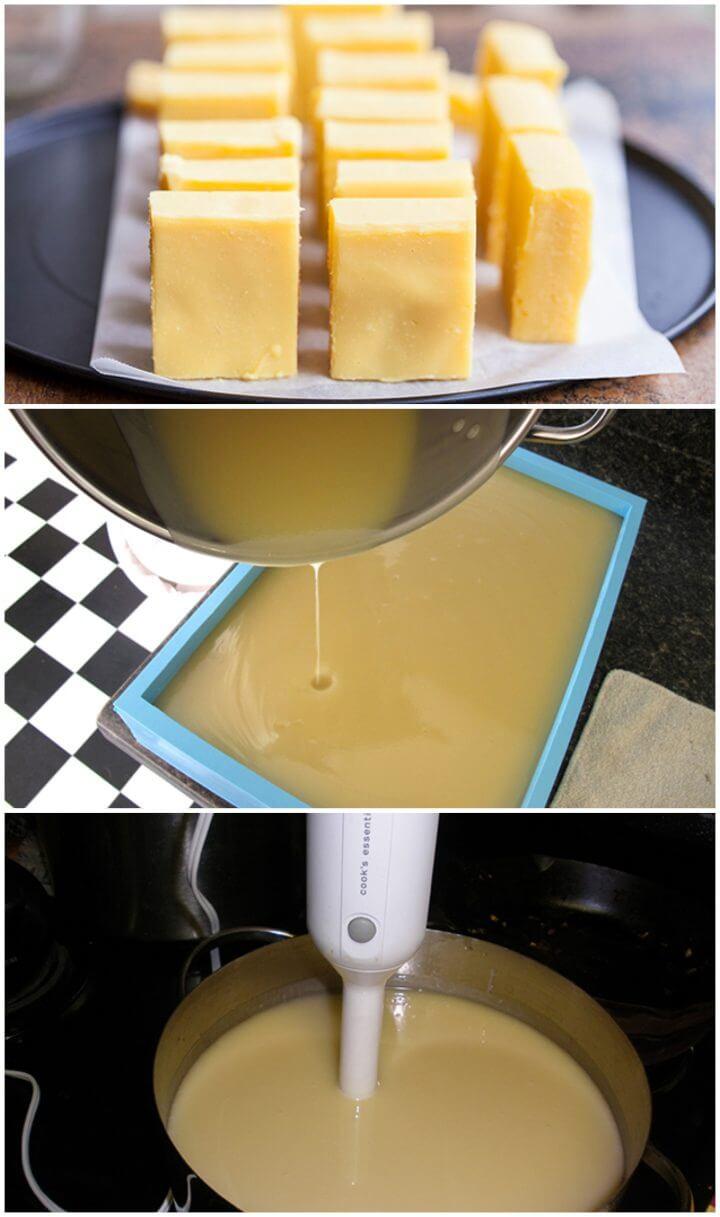
Ready to craft your own soap at home? Life’d presents a step-by-step guide that simplifies the soap-making process. With a detailed ingredients checklist, essential supplies, and clear precautions, you’ll learn how to make natural, moisturizing soaps. This tutorial includes a palm-free recipe, safety tips for handling lye, and instructions for blending oils.
Ideal for DIY enthusiasts, the guide ensures you have all the information you need for a successful soap-making experience. Start making unique, homemade soaps today and enjoy the satisfaction of using your own creations.
8. 10 Minutes Milk and Honey Soap Recipe
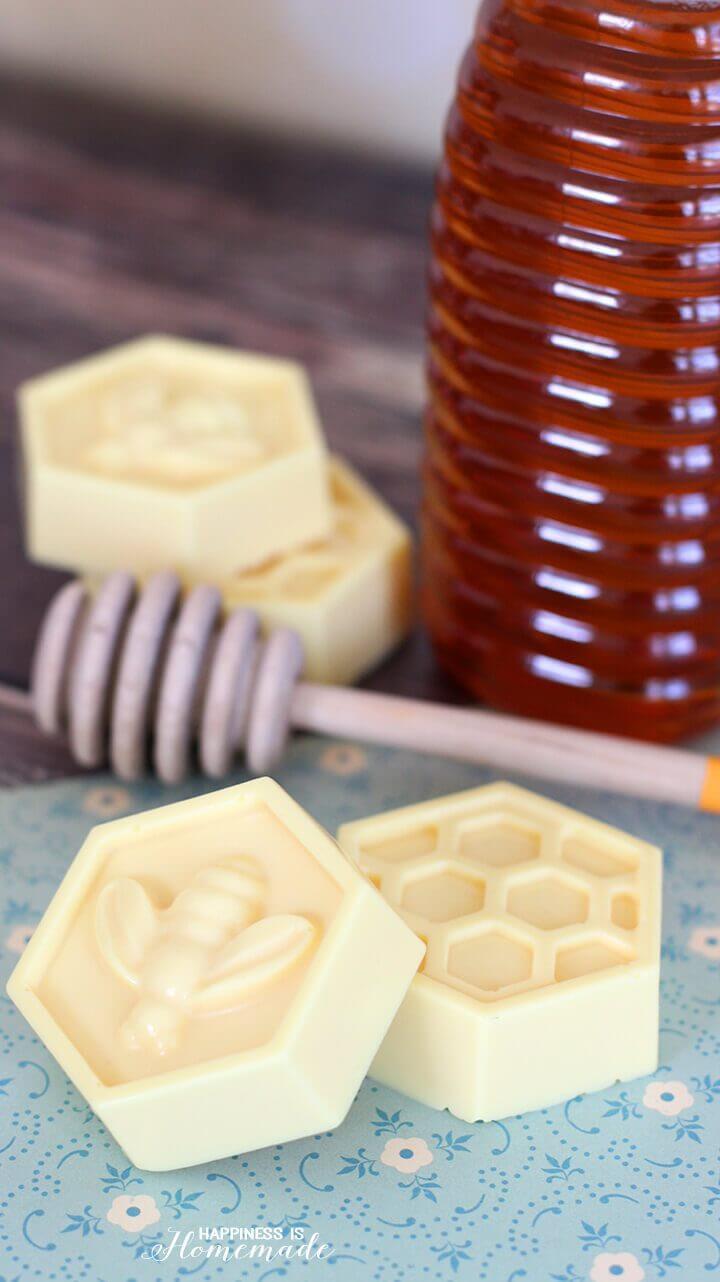
Make your own homemade Milk & Honey Soap with this simple 10-minute DIY guide from Happiness is Homemade. Ideal for gifts or personal indulgence, this soap combines the skin-nourishing benefits of goat’s milk with the moisturizing and antibacterial properties of honey. The process is quick and straightforward, making it perfect for anyone looking to add a natural touch to their skincare routine.
With a melt-and-pour method, there’s no need for curing, so you can enjoy your handcrafted soap almost immediately. Follow these easy steps and treat your skin to the gentle, clarifying effects of Milk & Honey Soap today.
9. How to Make Manly Bar Soap
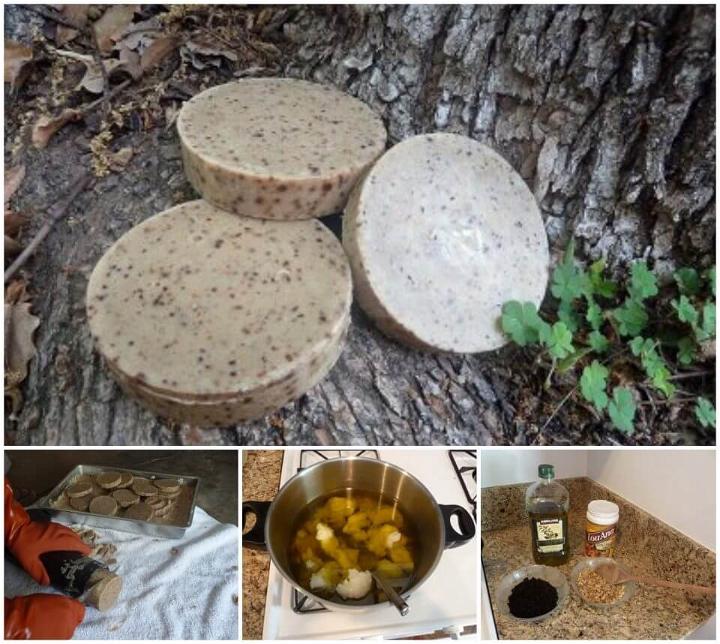
Embark on a DIY adventure with The Art of Manliness guide to crafting your very own manly bar of soap. This step-by-step tutorial takes you through the process, from selecting the right oils and exfoliants to the final stages of saponification. Tailor your soap with unique scents and textures, making it perfect for washing away the toughest grime or as a personalized gift.
Safety is paramount, so gear up with goggles and gloves, and get ready to transform simple ingredients into a staple of daily hygiene. With clear, instructive advice, you’ll learn to make a product that’s both practical and gratifying to use.
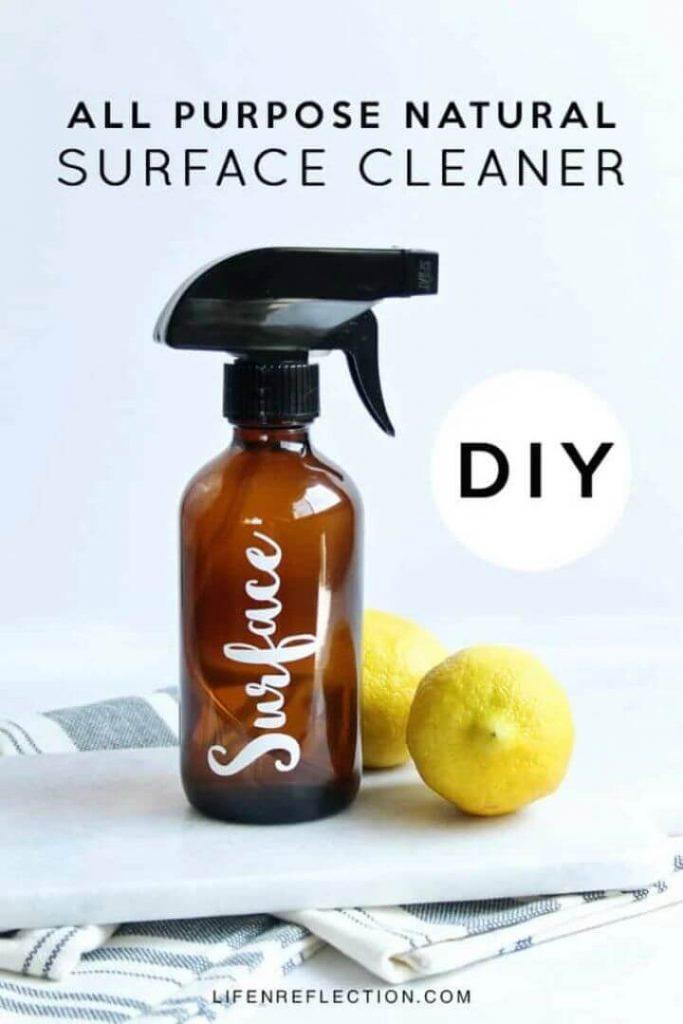
You may also like cleaning tips, hacks, advice, and other things about how to clean your house at no cost. 100 Cleaning Tips & Hacks You Wish You New Earlier
10. Almond Oatmeal Goat’s Milk Soap
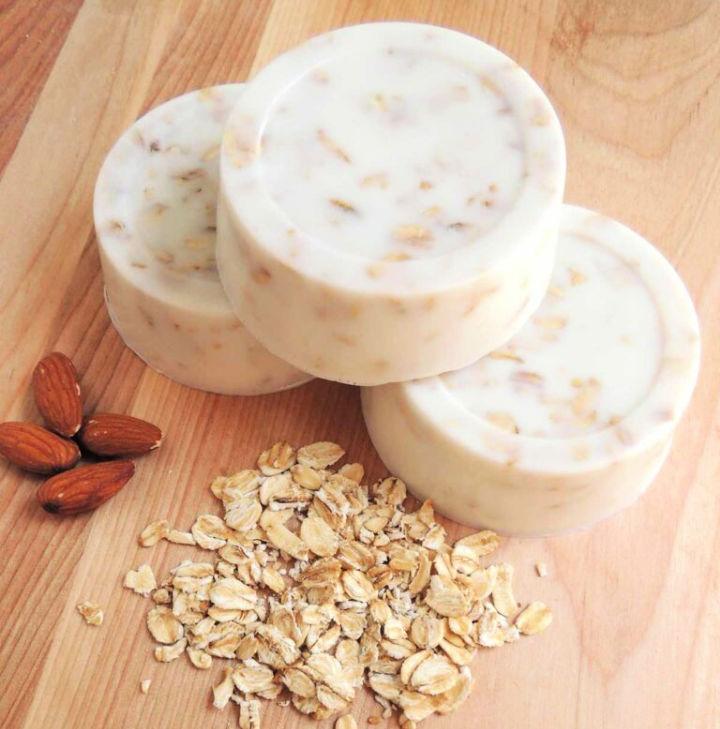
Discover how to craft your own luxurious almond oatmeal goat’s milk soap with this easy-to-follow tutorial from Mom Makes Joy. Ideal for soothing and moisturizing the skin, these homemade soap bars are perfect for gifting or adding a touch of elegance to your bathroom. With a melt-and-pour method, you can safely make these delightful bars, infusing them with natural ingredients like oats, honey, and sweet almond fragrance.
Get step-by-step instructions and tips to ensure your soap-making experience is enjoyable and successful. Dive into the rewarding process of making these creamy, exfoliating soap bars and treat yourself or someone special to a handmade treasure.
11. Easy to Make a Soap Without Lye
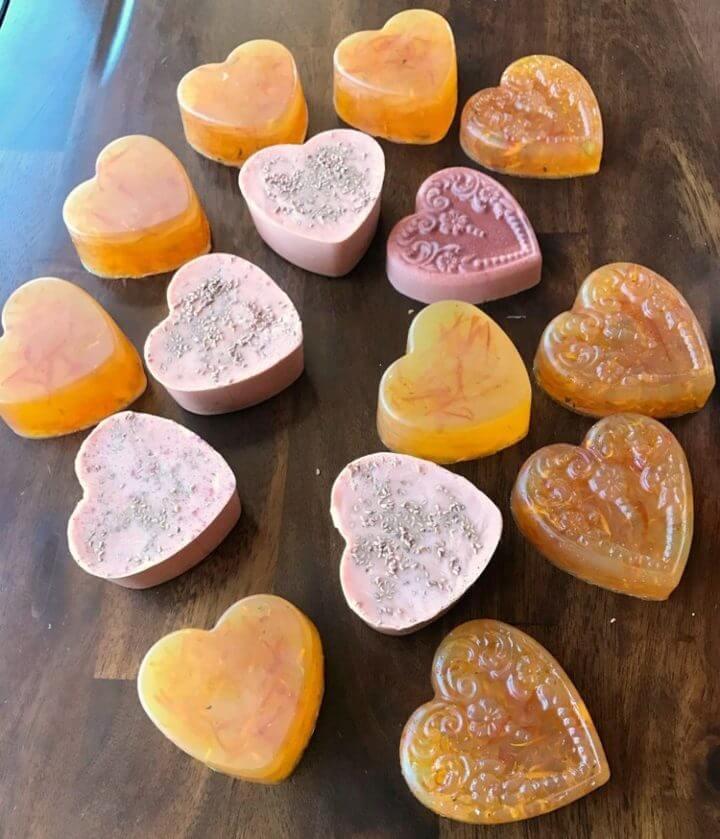
Interested in making your own soap at home but hesitant about using lye? Healing Harvest Homestead offers a comprehensive guide to making handmade soaps using the Melt and Pour method. This technique is ideal for those who want to avoid handling lye while still crafting unique and personalized soaps.
With step-by-step instructions, you can add your favorite herbs, essential oils, and other natural additives to make soaps that are both beautiful and beneficial. Dive into soap making with confidence and let your creativity flourish with Healing Harvest Homestead’s helpful and engaging Melt and Pour soap-making guide.
12. Make Your Own Kefir Soap
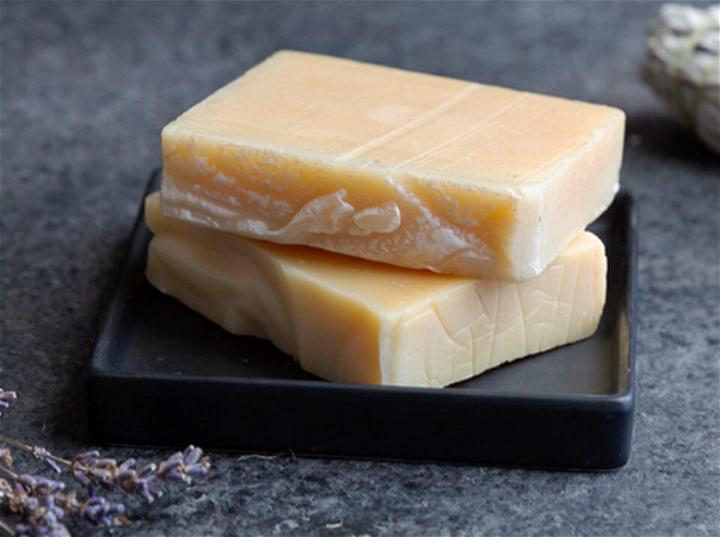
Crafting homemade kefir soap is a rewarding endeavor, yielding a product that’s both nourishing for the skin and delightful to use. Lifeway Kefir shares a step-by-step guide on how to make this moisturizing soap, utilizing the natural benefits of kefir, rich in Alpha-Hydroxy Acids. Safety is paramount in soap-making, especially when handling lye, so protective gear and careful attention to detail are essential.
By freezing kefir or keeping it ice-cold, you can prevent scorching during the saponification process. Once mixed with oils and essential fragrances, the soap requires 4-6 weeks to cure. The result? A creamy, skin-loving bar of soap to enjoy or share as a thoughtful, handcrafted gift.
13. Best Melt and Pour Soap Recipe
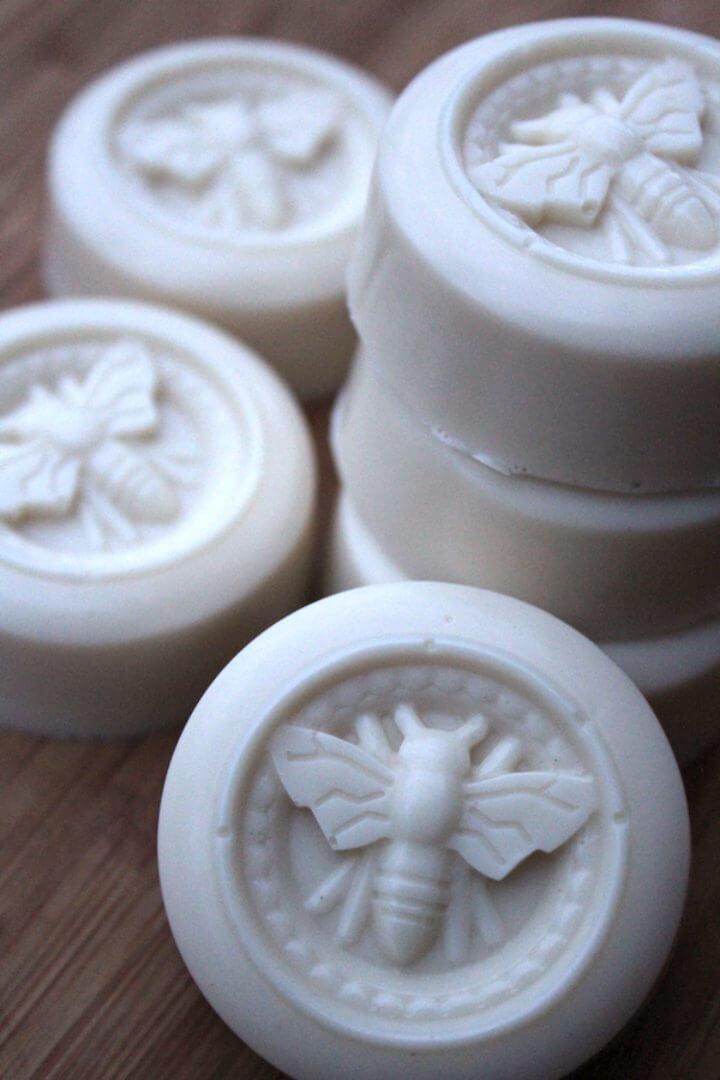
Dive into soapmaking with ease using melt and pour techniques. At Practical Self Reliance, discover how to select the right soap base and learn the essentials of crafting beautiful, custom soaps at home. Master the art of adding colors, scents, and skin conditioners to make personalized bars that make perfect gifts or indulgent treats for yourself.
With step-by-step guidance, you’ll find soapmaking to be a rewarding and creative hobby that doesn’t require handling lye or complex equipment. Get inspired and start making your unique melt and pour soaps today!
14. How to Make Oatmeal Soap at Home
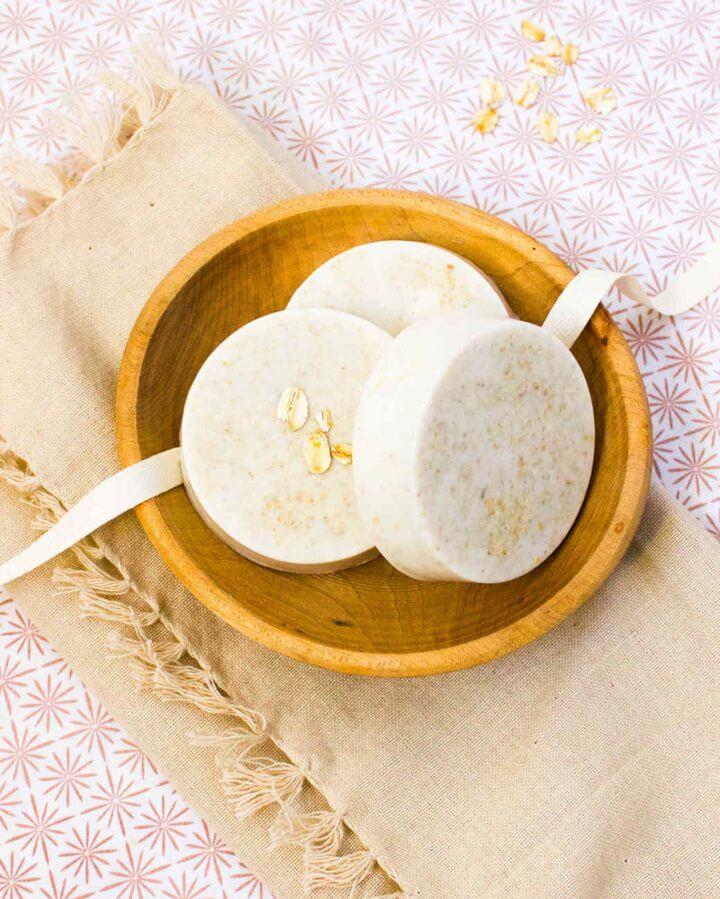
Ready to pamper your skin with a touch of nature’s kindness? Crafting oatmeal soap at home is a simple, satisfying project that yields nourishing results. With the guidance of Martha Stewart‘s editors, you can easily make a soap that combines the exfoliating power of organic rolled oats with the moisturizing benefits of shea butter and raw honey.
Ideal for sensitive skin, this melt and pour recipe is straightforward and safe, avoiding the use of harsh chemicals like lye. Follow the step-by-step instructions to mix, melt, and mold your way to a batch of soothing, homemade oatmeal soap that leaves your skin feeling radiant and soft.
15. Handmade Soap With Herbs
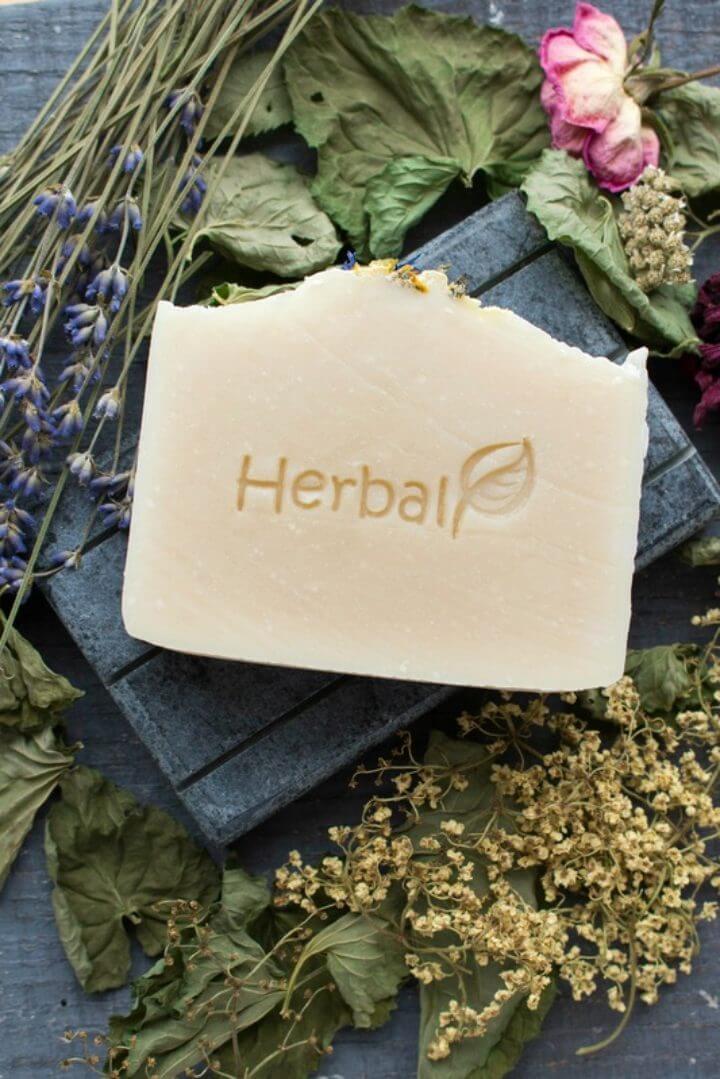
Crafting your own soap with herbs is not only a creative outlet but also a way to make a product that’s beneficial for your skin. Our guide provides step-by-step instructions to make soap from scratch, incorporating natural ingredients like organic herbs, flowers, and essential oils.
With tips on equipment, safety, and the soap-making process, you’ll learn how to mix, cure, and customize your bars for a personal touch. Perfect for those interested in DIY skincare, our tutorial ensures a rewarding experience with handmade results. Mountain Rose Herbs
16. Citrus Poppy Seed Swirl Soap Recipe
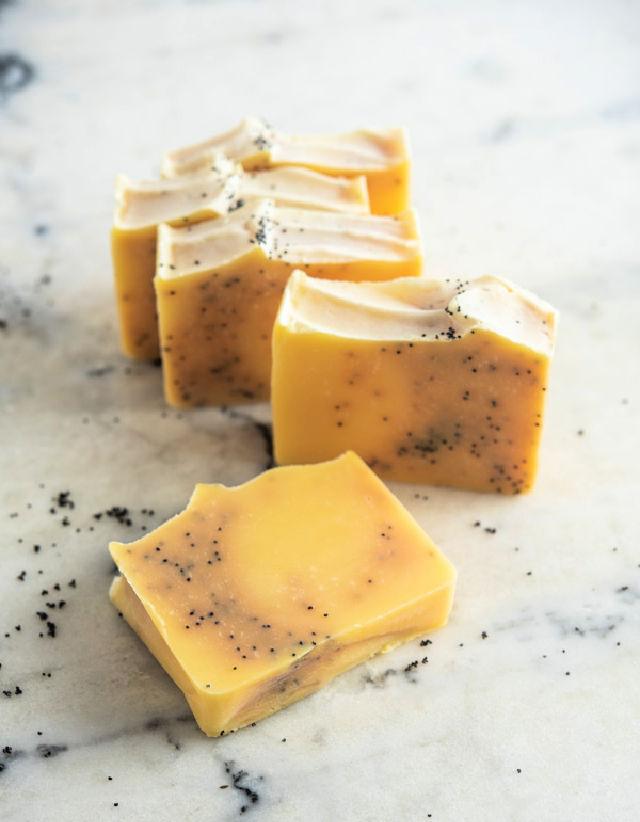
Explore the craft of soap making with Humblebee & Me‘s guide on making Citrus Poppy Seed Swirl Soap. This tutorial takes you through the process of making beautifully textured, citrus-scented soap bars with a unique poppy seed swirl. Perfect for soap making enthusiasts, the instructions are clear and easy to follow, ensuring a fun and rewarding experience.
With a blend of natural oils and essential oils, these homemade soaps not only smell fresh but are also gentle on the skin. Learn to mix, pour, and set your soap, achieving professional-looking results right from your kitchen. Get ready to transform simple ingredients into charming, aromatic bars that make for delightful personal use or thoughtful gifts.
17. Simple DIY Natural Homemade Soap
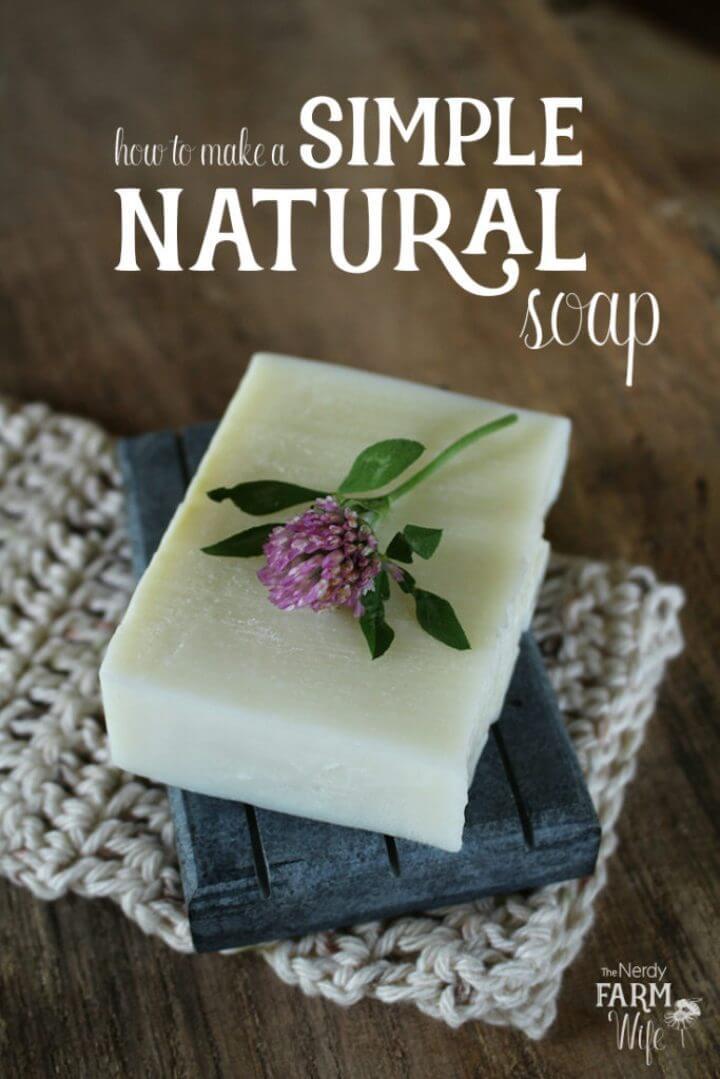
Discover how to craft natural soap with a simple recipe from The Nerdy Farm Wife. Ideal for those with sensitive skin, this tutorial emphasizes using olive oil for its gentle touch, coconut or babassu oil for firmness and bubbles, and castor oil to enhance lather.
With clear, step-by-step instructions, you can make soap that not only cleanses but also cares for your skin. Whether making soap for the first time or adding to your homemade skincare collection, this guide is a valuable resource for making pure, quality soaps at home.
18. Coconut Oil Soap for Cleansing and Laundry
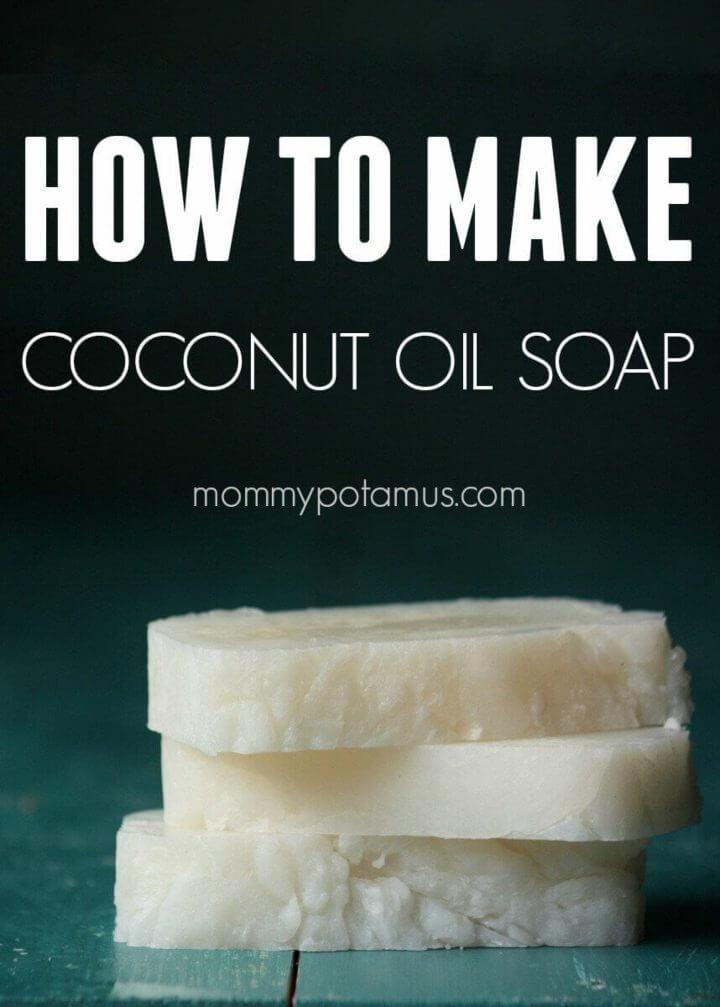
Discover how to make your own coconut oil soap with Mommypotamus‘ straightforward recipe, ideal for both body care and laundry needs. With just three essential ingredients and a simple process, you can craft a moisturizing and bubbly soap that’s gentle on the skin. Superfatting ensures a luxurious feel, while a different superfat level makes it perfect for laundry.
This guide includes a photo tutorial and expert tips to ensure success. Keep your soap natural and homemade, providing a pure and effective solution for daily use.
19. How to Do You Make a Soap
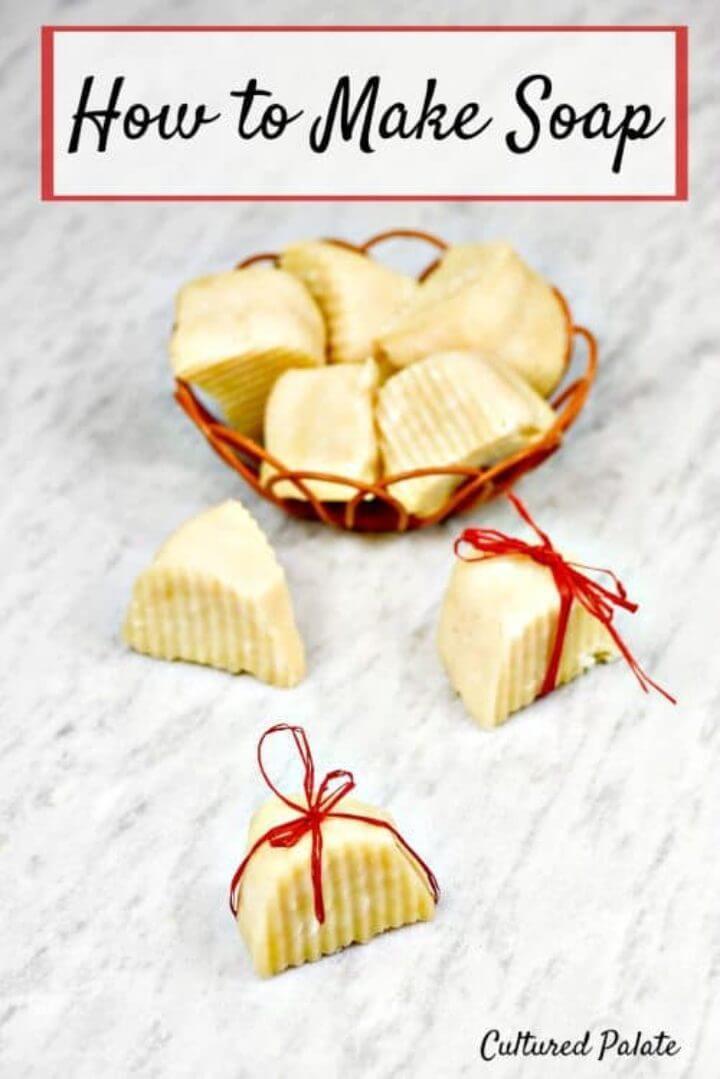
Discover how to craft your own nourishing tallow soap with this easy-to-follow recipe from Cultured Palate. Homemade soap not only provides a personal touch but also offers a gentle and natural alternative to store-bought options. With a blend of tallow, olive oil, coconut oil, and your choice of essential oils, this soap-making guide ensures a rewarding experience.
Safety tips and detailed instructions are provided, making it simple for anyone to make their own bars of soap at home. Perfect for self-care or as thoughtful handmade gifts, this tallow soap recipe is a great addition to your DIY repertoire.
20. Basic Soap With Olive Oil
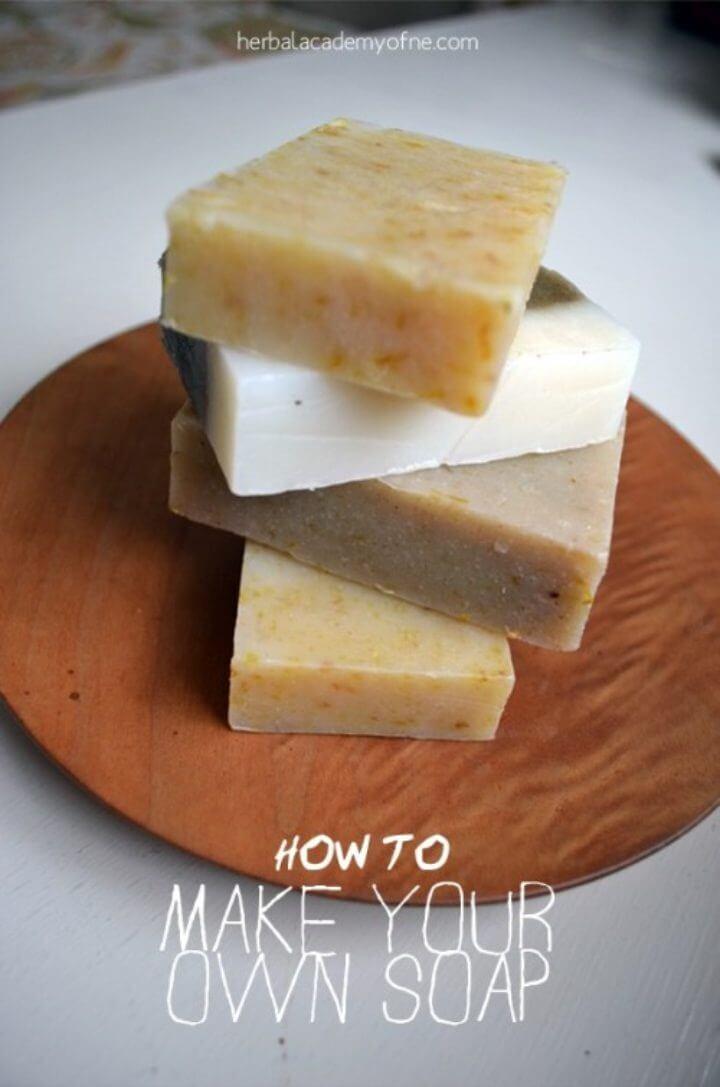
Ready to craft your own soap at home? Herbal Academy guides you through the process with a comprehensive tutorial on soap making, integrating the natural benefits of herbs and essential oils. Learn to mix, mold, and cure your handmade soap, ensuring a personal touch and control over the ingredients for a skin-friendly result.
With sustainable and organic options, such as olive, coconut, and palm oils, you can make a soap that aligns with both your values and skincare needs. Embrace the joy of DIY soap making and treat yourself to a unique, artisanal experience.
21. Homemade Rainbow Soap for Kids
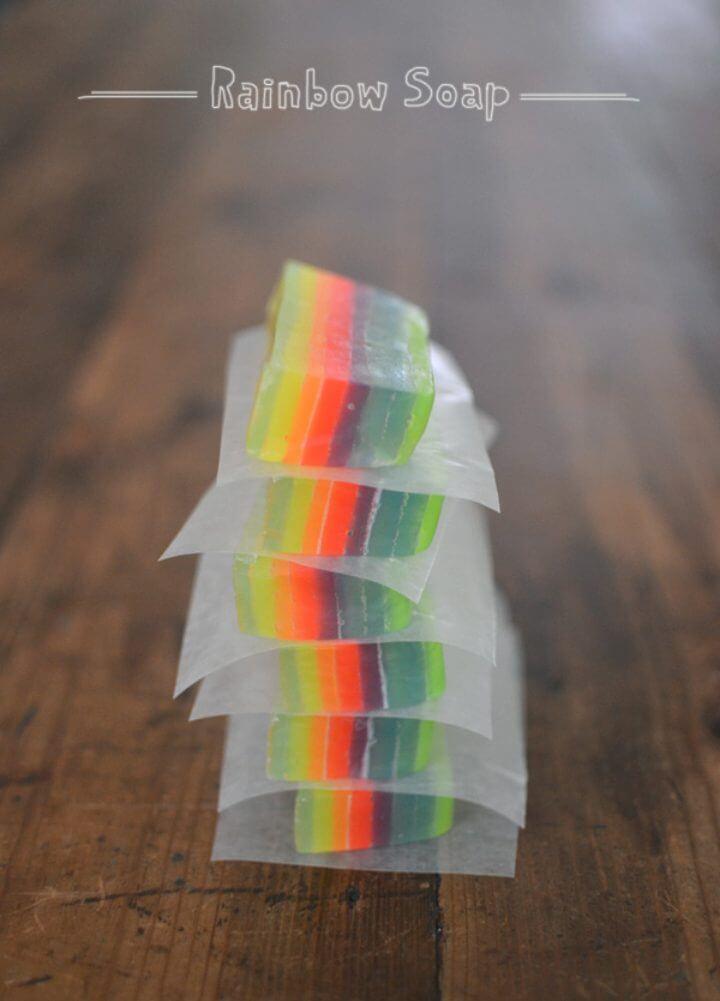
Discover how to make homemade rainbow soap with kids, a fun and creative activity perfect for the holidays or any special occasion. At ARTBAR, we’ve explored the art of soap making, using clear glycerine, vibrant soap dyes, and aromatic essential oils to craft beautiful, layered soap bars. This project is an engaging way to introduce children to the basics of soap making, and the finished products make for heartfelt, handcrafted gifts.
Our step-by-step guide ensures a smooth experience, even if you’re tackling soap making for the first time. Dive into this colorful craft, and enjoy the satisfaction of making unique soaps with your little ones.
22. Flower Infused Milk Soap Recipe
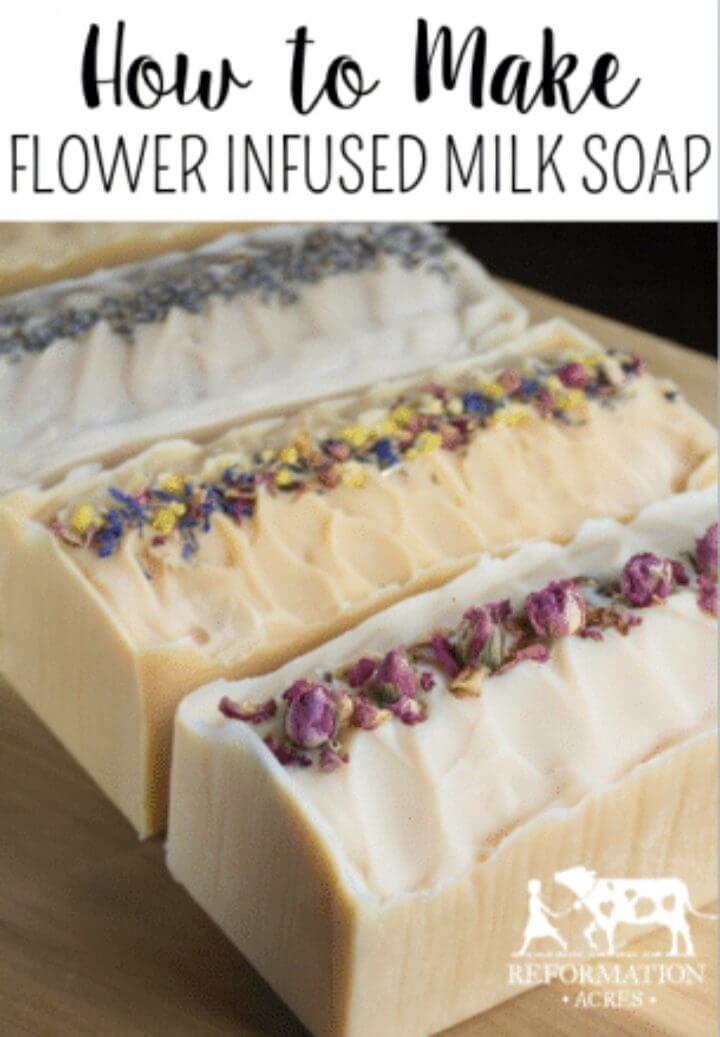
Learn how to craft your own Flower Infused Milk Soap with a step-by-step guide from Reformation Acres. This cold-process soap utilizes blossoms from your garden, making a personalized touch to your skincare routine. Start by freezing the milk to prevent overheating and prepare your flower-infused olive oil with blooms like chamomile or lavender.
The recipe includes a mix of natural oils, essential oils for fragrance, and a detailed process to ensure a successful soap-making experience. Perfect for those who appreciate natural beauty products, this tutorial is engaging and instructive, providing a rewarding DIY project that yields soothing, fragrant soap bars for everyday use.
23. DIY Soap With Details Instructions
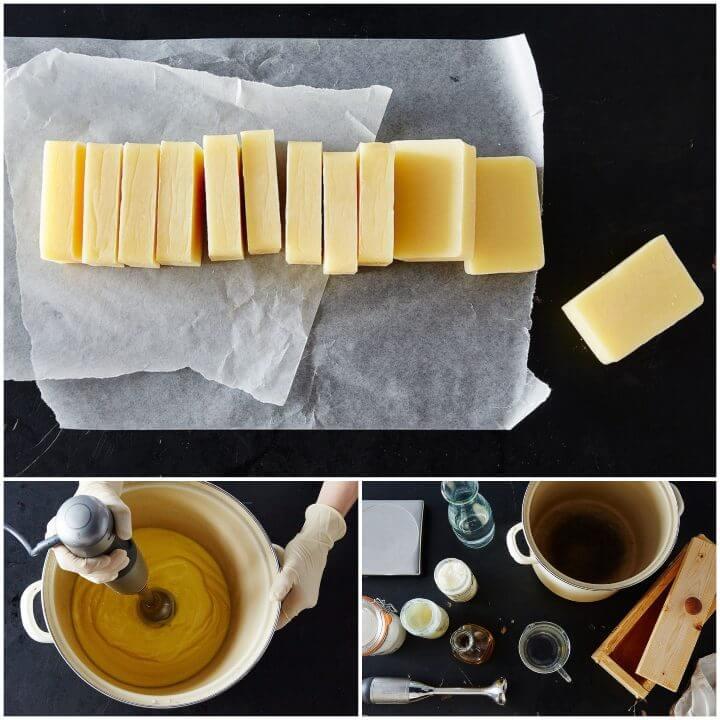
Making soap at home is a rewarding DIY project that Food52‘s guide simplifies for crafters of all skill levels. Learn the cold press method using just five ingredients, including lye and olive oil, to make your own bars. This step-by-step tutorial ensures safety with lye handling tips and provides creative freedom with essential oil blends.
With a few kitchen tools and patience during the curing process, you’ll craft homemade soaps that can be perfect gifts or personal indulgences. Dive into this engaging, instructive, and helpful guide to elevate your home crafting skills.
24. Make a Cold Process Soap
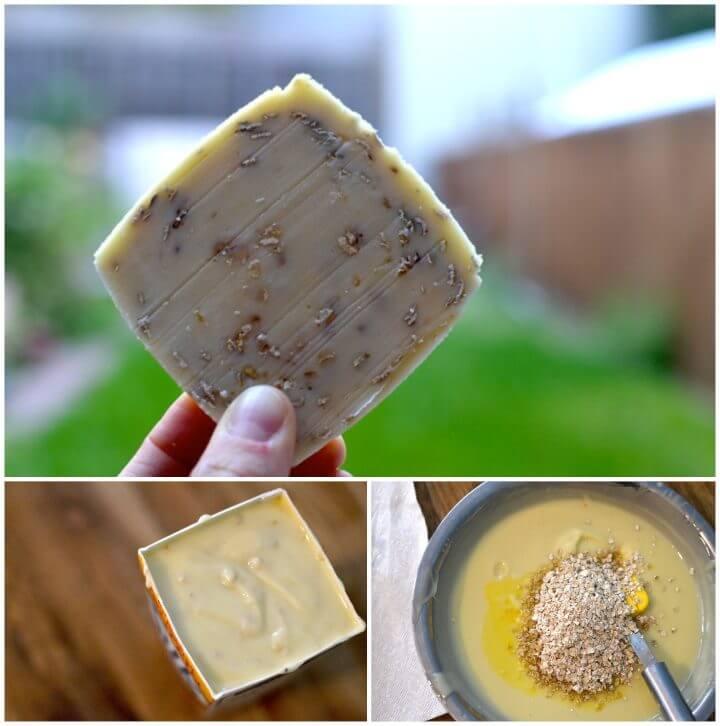
Ready to make your own cold process soap? Our guide offers step-by-step instructions to craft homemade soap that’s perfect for gifting or personal use. With a focus on safety and customization, you’ll learn how to mix lye and oils, reach the right consistency, and add your personal touch with fragrances and exfoliants.
Follow the curing process to ensure a gentle, skin-friendly bar. Dive in and enjoy the satisfaction of making soap from scratch, tailored just for you. Brooklyn Brainery
25. Making Your Own Pencil Soap
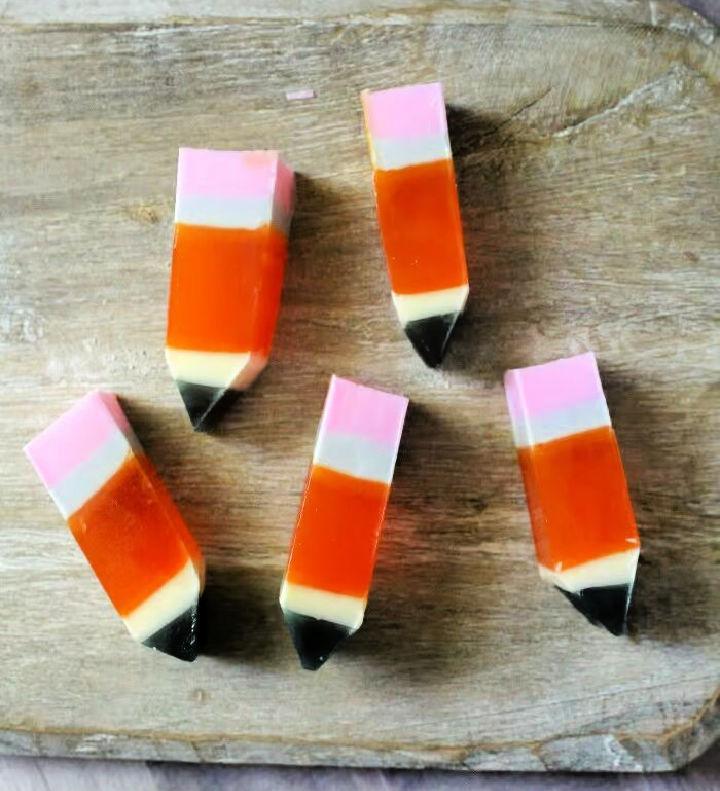
Discover how to make charming DIY Pencil Soaps with this engaging guide from Crafts 4 Toddlers. Perfect for adding a playful touch to your child’s bathroom routine or crafting a thoughtful teacher gift, these homemade soaps are a fun family activity. Learn to layer colors and scents using a simple pour method with soap bases and colorings.
This instructive and easy-to-understand tutorial will help you and your kids enjoy crafting and using these cute pencil-shaped soaps. Get ready to enhance handwashing time with a touch of creativity!
26. Lemon Shea Butter Soap Recipe
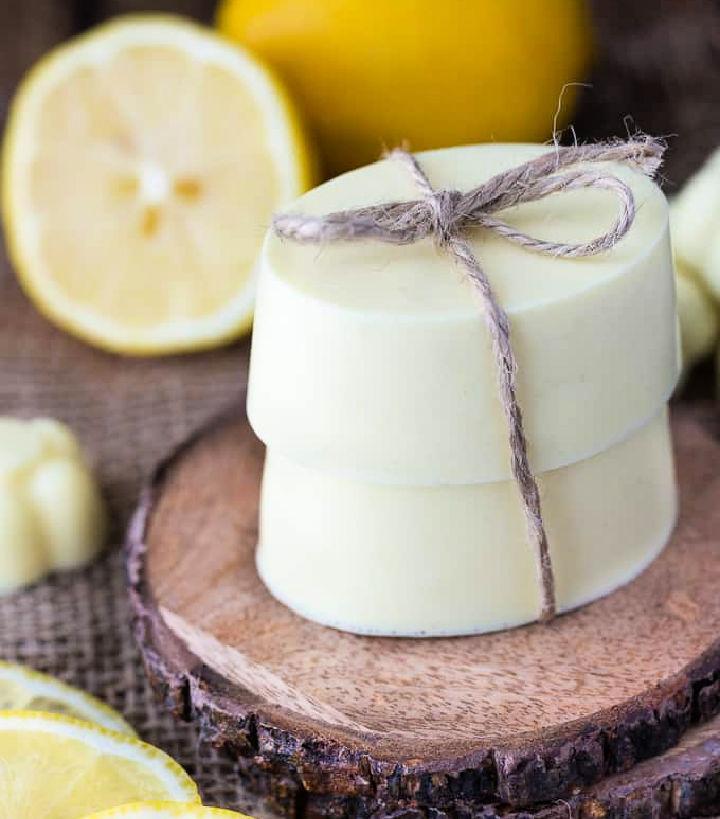
Making homemade Lemon Shea Butter Soap is a soothing and rewarding craft that adds a touch of personal luxury to your daily routine or makes for a thoughtful handmade gift. With its creamy texture and refreshing citrus aroma, this soap is crafted using shea butter and lemon essential oil for a nourishing skin experience. Simply Stacie offers an easy-to-follow guide, perfect for those who appreciate natural beauty products and enjoy the satisfaction of DIY projects.
The process involves melt and pour soap base, ensuring a straightforward and enjoyable soap-making session. Emphasize the benefits of the natural ingredients and the simplicity of the method for a soap that’s as beneficial to the skin as it is delightful to create.
Conclusion
In conclusion, homemade soap making is a rewarding pursuit that marries natural ingredients with your personal flair. Our guide of “25 homemade soap making tutorials” equips you with the know-how to create bespoke soaps right at home, offering cost-saving perks and the joy of crafting by hand. Ready to nurture your skin and infuse a touch of nature into your daily routine? Start making soap at home today and revel in the satisfaction of your unique homemade soap bars.
